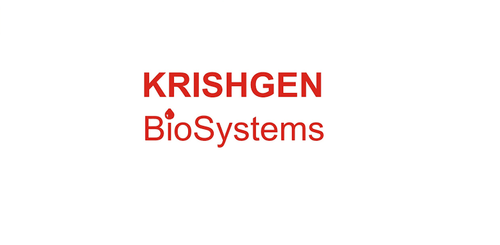Product Description
Human Acyl-coenzyme A synthetase ACSM3, mitochondrial (ACSM3) ELISA Kit | KTE60888 | Abbkine
Application: This Human Acyl-coenzyme A synthetase ACSM3, mitochondrial (ACSM3) ELISA Kit employs a two-site sandwich ELISA to quantitate ACSM3 in samples. An antibody specific for ACSM3 has been pre-coated onto a microplate. Standards and samples are pipetted into the wells and anyACSM3 present is bound by the immobilized antibody. After removing any unbound substances, a biotin-conjugated antibody specific for ACSM3 is added to the wells. After washing, Streptavidin conjugated Horseradish Peroxidase (HRP) is added to the wells. Following a wash to remove any unbound avidin-enzyme reagent, a substrate solution is added to the wells and color develops in proportion to the amount of ACSM3 bound in the initial step. The color development is stopped and the intensity of the color is measured.
Detection Method: Colorimetric
Conjugate: N/A
Sample Type: Cell culture supernatants#Serum#Plasma#Other biological fluids
Assay Type: Multiple steps standard sandwich ELISA assay with a working time of 3-5 hours. It depends on the experience of the operation person.
Kit Component: • Human Acyl-coenzyme A synthetase ACSM3, mitochondrial microplate
• Human Acyl-coenzyme A synthetase ACSM3, mitochondrial standard
• Human Acyl-coenzyme A synthetase ACSM3, mitochondrial detect antibody
• Streptavidin-HRP
• Standard diluent
• Assay buffer
• HRP substrate
• Stop solution
• Wash buffer
• Plate covers
Features & Benefits: Human Acyl-coenzyme A synthetase ACSM3, mitochondrial (ACSM3) ELISA Kit has high sensitivity and excellent specificity for detection of Human ACSM3. No significant cross-reactivity or interference between Human ACSM3 and analogues was observed.
Calibration Range: Please inquire
Limit Of Detection: Please inquire
Usage Note: • Do not mix components from different kit lots or use reagents beyond the kit expiration date.
• Allow all reagents to warm to room temperature for at least 30 minutes before opening.
• Pre-rinse the pipet tip with reagent, use fresh pipet tips for each sample, standard and reagent to avoid contamination.
• Unused wells must be kept desiccated at 4 °C in the sealed bag provided.
• Mix Thoroughly is very important for the result. It is recommended using low frequency oscillator or slight hand shaking every 10 minutes.
• It is recommended that all samples and standards be assayed in duplicate or triplicate.
Storage Instruction: The unopened kit should be stored at 2 - 8°C. After opening, please store refer to protocols.
Shipping: Gel pack with blue ice.
Precaution The product listed herein is for research use only and is not intended for use in human or clinical diagnosis. Suggested applications of our products are not recommendations to use our products in violation of any patent or as a license. We cannot be responsible for patent infringements or other violations that may occur with the use of this product.
Background: By Southern analysis of somatic cell hybrids, Szpirer et al. (1993) independently assigned the Sa gene to rat chromosome 1 and showed that the human homolog, SAH, resides on chromosome 16. the deduced amino acid sequence from the isolated human SAH cDNA consisted of 578 amino acid residues and had slight homology to a bacterial enzyme, acetyl-CoA synthase. With the restriction enzyme PstI, they found a RFLP in the SAH gene and compared allele frequencies between hypertensive and control groups. The hypertensive group consisted of 89 persons, and the PstI rare allele (allele A2) frequency in this group was 0.270. The control group consisted of 81 healthy normotensive persons, among whom the A2 allele frequency was 0.09. The differences were significant at the P = 0.0001 level.
Alternative Names: ACSM3; SA; SAH; SA (rat hypertension-associated) homolog; SA hypertension-associated homolog
Search name: ACSM3; SA; SAH; SA (rat hypertension-associated) homolog; SA hypertension-associated homolog
Tag: ACSM3
 Euro
Euro
 USD
USD
 British Pound
British Pound
 NULL
NULL








